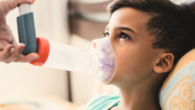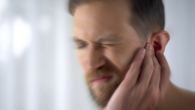
Dermatologist explains what the mpox (monkeypox) rash looks like|Signs and Symptoms | Mpox | Poxvirus||Mpox (Monkeypox): Causes, Symptoms, Treatment
Monkeypox is a viral zoonosis (a virus transmitted to humans from animals) that presents with symptoms similar to those seen in the past in smallpox patients, although it is clinically less severe. The appearance of monkeypox on a human varies over time as the disease progresses through different stages, from the initial infection to the recovery phase. Here’s a detailed description of what monkeypox looks like on a human, described step by step.
- Initial Symptoms (Prodromal Stage)
The first signs of monkeypox typically appear 5 to 21 days after exposure to the virus. This stage is known as the prodromal phase and can last from 1 to 3 days.
Fever: The first noticeable symptom is a high fever, often over 38.5°C (101.3°F). The fever is usually sudden and intense, signaling that the body is responding to the infection.
Headache and Muscle Aches: Along with fever, patients often experience severe headaches, muscle aches (myalgia), and back pain. The pain can be debilitating, making it difficult to move or perform daily activities.
Lymphadenopathy (Swollen Lymph Nodes): One of the distinguishing features of monkeypox (compared to smallpox) is the swelling of lymph nodes. This typically occurs in the neck, under the arms, or in the groin and can be quite painful.
Chills and Exhaustion: As the body fights off the infection, patients may also experience chills and extreme fatigue, leaving them bedridden for several days. - Rash Development (Enanthem and Exanthem Stages)
Following the prodromal stage, a rash begins to develop. This rash progresses through several distinct stages, each with its own appearance.
Enanthem Stage (Mucosal Rash)
Mouth and Throat: The first rash often appears on the mucous membranes of the mouth and throat. These lesions may look like small, red spots or ulcers, making swallowing and speaking painful.
Exanthem Stage (Skin Rash)
The rash spreads from the face to other parts of the body, including the arms, legs, and trunk. This stage can last for 2 to 4 weeks and involves several phases:
Macules: The initial rash starts as flat, discolored spots called macules. These are usually small, about 2-5 mm in diameter, and can be pink or red. The macules may appear first on the face and then spread to other parts of the body. Within 24 hours, they begin to cover large portions of the skin.
Papules: Within 1 to 2 days, the macules elevate and become papules. These are firm, raised bumps that are well-defined, about 1-2 cm in diameter. They have a distinct boundary, and the skin feels rough to the touch. At this point, the rash may start to itch.
Vesicles: The papules then fill with clear fluid and become vesicles, which are small blisters. These vesicles are often painful, and the skin around them may be red and inflamed. The fluid inside the vesicles is highly contagious, as it contains large amounts of the virus.
Pustules: Over the next few days, the fluid inside the vesicles becomes cloudy or opaque as the vesicles turn into pustules. These pustules are deeper and larger than vesicles and have a more solid feel. They are dome-shaped, and the skin over them is tight and shiny. The pustules are very tender to the touch and may be accompanied by a burning sensation.
Crusting and Scabbing: After about 5 to 7 days, the pustules begin to dry out, forming crusts. These crusts are thick and dark brown or black. As they dry, the skin beneath them starts to heal, and the crusts eventually fall off, leaving behind areas of depigmentation or scarring. - Distribution of the Rash
The distribution of the rash in monkeypox is typically centrifugal, meaning it is more concentrated on the face, arms, and legs, particularly the palms of the hands and soles of the feet, than on the trunk. The face and extremities may have several hundred lesions, while the trunk has fewer. The rash also commonly affects the mucous membranes of the mouth, genitalia, and conjunctivae (eyelids).
Face: The face is almost always involved, and the rash can be severe, with lesions covering the forehead, cheeks, and around the eyes and mouth.
Extremities: The rash is particularly prominent on the hands and feet, often covering the palms and soles completely. The lesions may make walking and using the hands painful.
Genital and Perianal Areas: The rash can also affect the genital and perianal areas, which can be particularly uncomfortable and may cause pain during urination or bowel movements.
Eyes: In some cases, the rash may involve the eyes, leading to conjunctivitis or keratitis, which can cause vision problems if not treated promptly. - Secondary Infections and Complications
In some cases, the lesions may become infected with bacteria, leading to secondary infections. These infections can cause increased pain, swelling, and redness around the lesions, and may result in abscesses or cellulitis. In severe cases, the infection can spread to the bloodstream, causing sepsis.
Other potential complications of monkeypox include:
Pneumonia: If the virus spreads to the lungs, it can cause pneumonia, which may present with symptoms such as cough, difficulty breathing, and chest pain.
Encephalitis: In rare cases, the virus may spread to the brain, causing encephalitis, an inflammation of the brain that can lead to confusion, seizures, or coma.
Eye Complications: If the rash affects the eyes, it can lead to conjunctivitis, keratitis, or corneal ulcers, which may result in permanent vision loss if not treated. - Recovery Phase
As the disease progresses, the patient’s immune system begins to control the infection. The rash continues to heal, and new skin forms under the crusts. However, the healing process can be slow, and the skin may remain discolored or scarred for weeks to months.
Scarring: In many cases, the lesions leave behind pitted scars, similar to those seen in smallpox survivors. These scars can be deep and disfiguring, especially on the face and hands.
Skin Discoloration: The areas where the lesions were may remain lighter or darker than the surrounding skin, a condition known as hyperpigmentation or hypopigmentation. This discoloration may gradually fade over time, but it can be permanent in some cases.
Fatigue and Weakness: Even after the rash has healed, patients may continue to feel fatigued and weak for several weeks. The body’s recovery from monkeypox can be slow, and some individuals may experience lingering symptoms for months. - Long-Term Effects
While most people recover fully from monkeypox, some may experience long-term effects. These can include:
Chronic Scarring: Scars left by the pustules can be permanent, particularly on the face and hands. These scars may affect a person’s appearance and self-esteem.
Psychological Impact: The experience of having monkeypox, especially if it was severe or left visible scars, can be traumatic. Some individuals may develop anxiety, depression, or post-traumatic stress disorder (PTSD) as a result of their illness.
Ocular Complications: If the eyes were affected, long-term vision problems may persist, including chronic pain, blurred vision, or even blindness. - Differential Diagnosis
Monkeypox can resemble other diseases, making it important for healthcare providers to differentiate it from similar conditions. The most notable comparison is with smallpox, due to the similarity in the rash’s appearance. However, the presence of swollen lymph nodes (lymphadenopathy) is a distinguishing feature of monkeypox.
Other diseases that may be considered in the differential diagnosis include:
Chickenpox: Caused by the varicella-zoster virus, chickenpox also presents with a rash, but the lesions are typically less uniform in size and may be concentrated more on the trunk than the extremities. Chickenpox lesions tend to appear in “crops,” with new ones appearing as older ones heal, unlike the more uniform progression of monkeypox lesions.
Syphilis: Secondary syphilis can cause a rash that might resemble monkeypox, but it usually starts on the trunk and spreads to the extremities, and syphilis lesions are not as deeply pustular.
Some other Frequently Asking Questions
what does monkeypox look like on a human,what to do if you have strep throat,what causes low red blood cell count,what causes tight muscles all over body,what causes ear infections,what causes a weak immune system,what causes swollen lymph nodes,what are symptoms of typhoid in adults,what causes swollen legs from the knee down in elderly,what causes weight gain,what causes mood swings,what is mumps,what causes ear infections in adults,what causes jaundice in adults,what causes blood infection,what are the symptoms of rabies,what is the cause of swollen feet





Leave a Reply